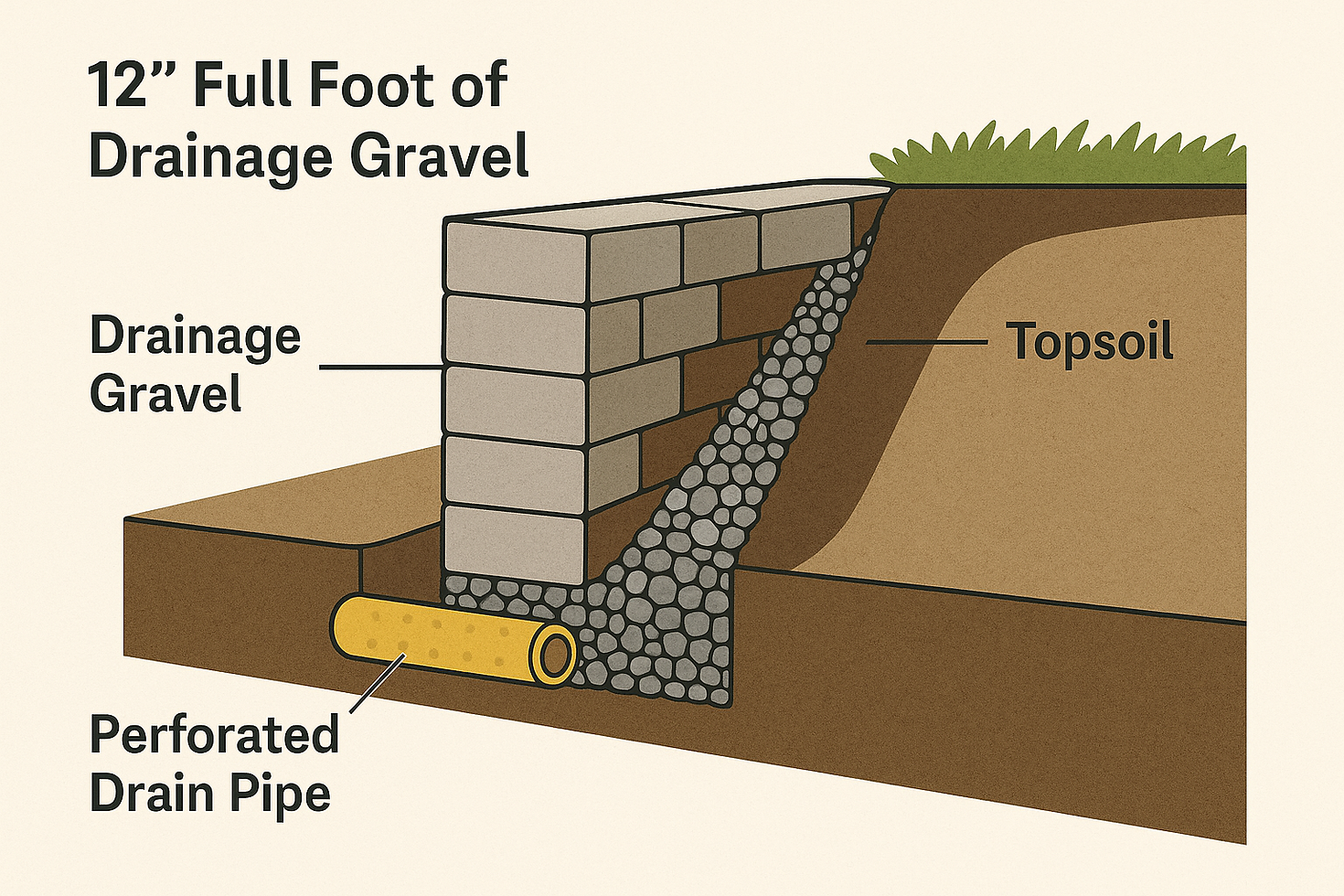
🧱 Our Proven Drainage Method
- jbauerags
- Jul 9
- 1 min read
1. Full Foot of Drainage Gravel
We place 12 inches (a full foot) of drainage gravel behind the wall. This extends vertically from the base of the wall all the way up—except the top 6 inches, where we finish with topsoil for plant support and surface stability.
2. Perforated Drain Tile
A perforated drain pipe is installed along the base, behind the wall, wrapped in filter fabric to prevent clogging. This ensures water is captured and redirected efficiently.
3. Weep Holes
Depending on the wall type, we may include weep holes—small outlets that allow trapped water to escape directly through the face of the wall.
4. Engineered Backfill & Compacting
We use the right soils and compact every layer, reducing pressure and promoting long-term stability.
🌧 Why It Matters in Michigan
Michigan’s freeze-thaw cycles are brutal. Without proper drainage, trapped water expands when frozen and can push your wall out, crack it, or even collapse it over time.
✅ Built to Last
When you choose Alliance, you’re not just getting a retaining wall—you’re getting a system designed for Michigan’s climate and built to protect your property for decades.

Comments